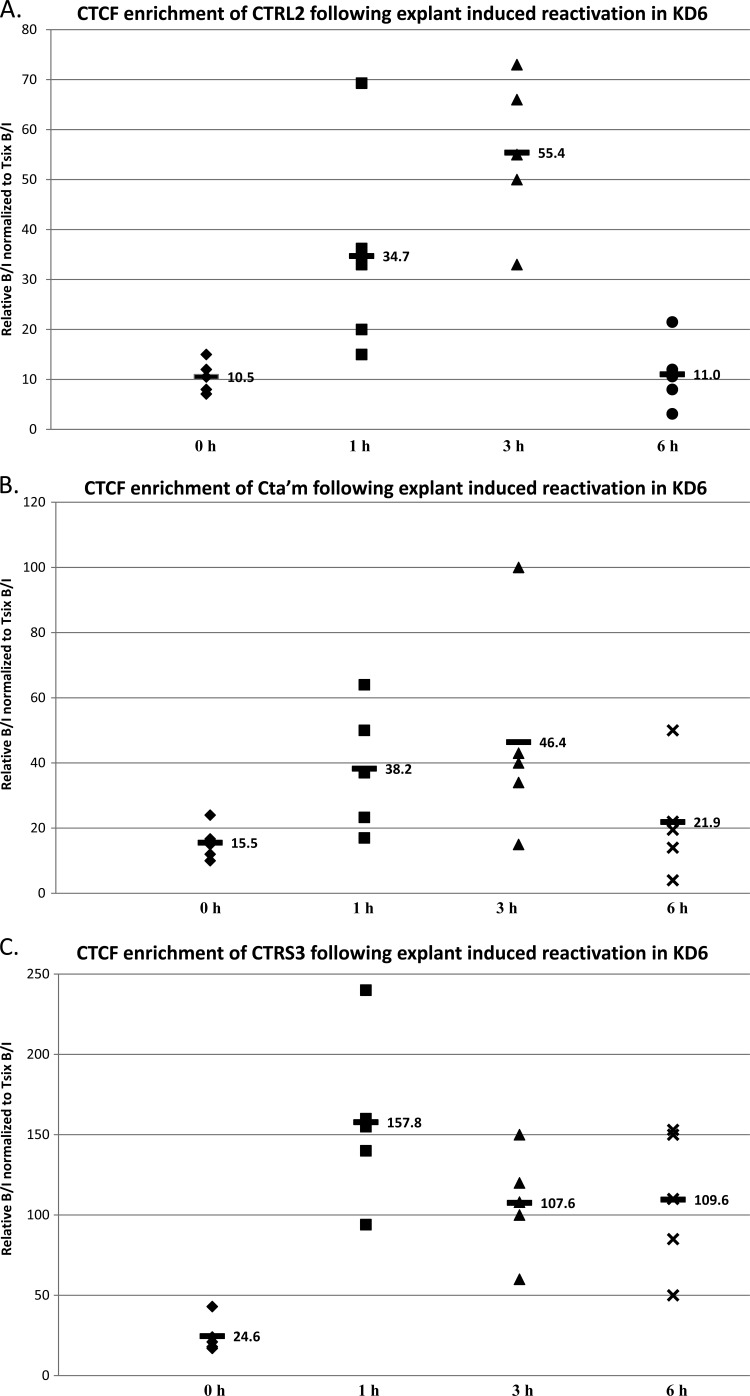Fig 10.
CTCF occupation following explant-induced reactivation of HSV-1 in mouse TG latently infected with KD6. Mice latently infected with HSV-1 KD6 were subjected to explant-induced HSV-1 reactivation for 1 h, 3 h, and 6 h by placing TG in supplemented medium and incubating each sample at 37°C with 5% CO2 for either 1, 3, or 6 h. ChIP assays using anti-CTCF were combined with real-time PCR analyses to compare explanted TG to TG from latently infected mice. All ChIP assays contained 3 mice (6 TG) pooled, and ChIPs postexplant were repeated 5 times (n = 5). All ratios reported are normalized to the B/I ratios of the host control Tsix imprinting/choice center CTCF site A for that experiment. The time following explant is represented on the x axis. The horizontal bars represent the average of the individual normalized ratios from ChIP for each time point. (A) CTCF occupation of the CTRL2 domain following explant is >5-fold more enriched in CTCF by 3 h postexplant than during latency. (B) CTCF occupation of the CTa′m domain following explant is ∼2.5-fold more enriched in CTCF by 3 h postexplant. (C) CTCF occupation of the CTRS3 domain following explant is >5-fold more enriched in CTCF by 1 h postexplant.

